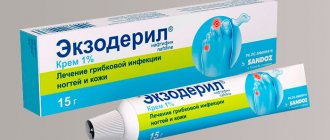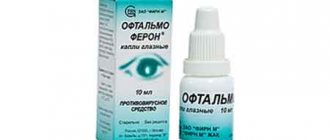pharmachologic effect
Although the mechanism of mesalazine's anti-inflammatory action is not fully known, it is believed to be locally effective than the system. In patients with chronic inflammatory bowel disease, the production of arachidonic acid metabolites in the mucosa was increased by the cyclooxygenase pathway such as “prononoids” or the lipoxygenase pathway such as “leukotrienes (LT)” and “hydroxyethorazoic acid (HETE).” It can reduce inflammation by suppressing production. When rectally applied mesalazine reaches the intestinal lumen, it acts locally on the mucous membrane and submucosal tissue.
Reviews
Reviews about this medicine, as a rule, people leave positive. Among the positive aspects, patients note the high effectiveness of the product, as well as a convenient method of administration.
Obvious advantages also include a large list of analogues, which allows you to choose a drug that suits your pocket.
Among the disadvantages, patients note the high cost of the drug, the presence of a large number of side effects, as well as an extensive list of contraindications. Some people do not like the method of administration, which is a subjective opinion.
Pharmacokinetics
Absorption of the active component is highest in the proximal intestine and lowest in the distal intestine. Metabolized by the mucous membrane of the liver and intestines by N-acetyl-5-aminosalicylic acid (N-Ac-5-ASA), which is pharmacologically inactive in both directions. The binding percentages of mesalazine and N-Ac-5-ASA are 43% and 78%, respectively. Mesalazine and its metabolite, N-Ac-5-ASA, are excreted 20-50% by the kidneys and to a lesser extent in the bile, depending on the route of administration.
Storage
The drug should be stored in a room where the temperature will not exceed 20 degrees. The chosen location should be dry, cool and dark.
If these recommendations are followed, the medicine can be used for no more than three years. After the expiration date, continued use is prohibited.
- See our article “The best folk remedy for gastritis!” To get rid of it QUICKLY and FOREVER...
- How to get rid of gases in the intestines and why do they occur?
- Activated carbon cleaning - is it worth starting?
Side effects
Despite the fact that in most cases the medication is well tolerated, the following disorders have been reported:
- gastrointestinal side effects: abdominal pain, diarrhea, gas, nausea and vomiting;
- central nervous system: headache and dizziness;
- symptoms of renal function: acute and chronic interstitial nephritis and kidney diseases, including renal failure;
- hypersensitivity reactions: bronchospasm, pericarditis, myocarditis, acute pancreatitis, in rare cases - allergic alveolitis and pancolitis;
- other side effects: myalgia, arthralgia, increased methemoglobin, very rarely, aplastanemia, agranulocytosis, pancytopenia, neutropenia, leukopenia, thrombocytopenia, increased transaminases, hepatitis and alopecia.
Contraindications
Absolute:
- Blood diseases;
- Severe renal and/or liver failure;
- Exacerbation of gastric and duodenal ulcers;
- Deficiency of the enzyme glucose-6-phosphate dehydrogenase (for tablets, granules and foam);
- Hemorrhagic diathesis (with a tendency to bleed);
- Phenylketonuria (for granules);
- Children's age: up to 2 years (for suppositories and suspensions); up to 3 years (for tablets); up to 6 years (for granules); up to 12 years (for foam);
- Last 4 weeks of pregnancy and breastfeeding period (for foam);
- Hypersensitivity to the main or auxiliary components of the drug, as well as salicylic acid and its derivatives.
Relative (Salofalk is used with caution):
- Hepatic and/or renal failure of mild to moderate severity;
- Respiratory dysfunction (including bronchial asthma);
- First trimester of pregnancy;
- Deficiency of the enzyme glucose-6-phosphate dehydrogenase (for suppositories and suspensions);
- Hypersensitivity to sulfasalazine.
Directions for use and doses
Adults and adolescents over 12 years of age: 2 rectal applications, one dose per day. If the amount of foam is too much at one time, the dose is divided into two parts, one can be used at night, and the other half early in the morning. If the desired effect cannot be achieved with the initial dose, it can be doubled, 2 at night and 2 in the morning. It is recommended to cleanse the intestines before use to get good results from the treatment.
In general, an acute episode of mild ulcerative colitis resolves within 4 to 6 weeks. It is recommended to continue maintenance therapy with an oral mesalazine preparation, such as Salofalk with gastro-resistant extended-release granules at the dosage recommended for this drug.
Price
The article presents the average price. To obtain accurate data, you need to contact a specific pharmacy.
In Russia and Ukraine the price will differ significantly.
Russia
- On average, you will have to pay 1,150 rubles for candles;
- Tablets cost 2800-3163 rubles;
- Rectal suspension costs an average of 4,930 rubles;
- On average, you will have to pay 5,678 rubles for granules of the drug Salofalk;
- Rectal foam costs 7650 - 8213 rubles.
Ukraine
- Candles cost 569.13 hryvnia;
- For tablets in Ukrainian pharmacies, the patient will be asked to pay 1720.15 hryvnia;
- Rectal suspension costs on average 2940.90 hryvnia;
- Salofalk medicine granules cost 3,130 hryvnia;
- For the drug Salofalk in the form of rectal foam you will have to pay 4891.90 hryvnia.
Video on the topic: Salofalk different dosage forms
special instructions
In accordance with the doctor's recommendations, blood and urine tests should be carried out before and during treatment, and these examinations should be repeated 2-3 times after the start of treatment and at 4-week intervals.
If the results are normal, follow-up tests should be performed every 3 months. If additional symptoms appear, these tests should be performed immediately.
Cases of nephrolithiasis have been reported with the use of mesalazine, including stones containing 100% mesalazine. It is recommended to ensure adequate fluid intake during treatment.
If Salofalk causes acute reactions such as abdominal cramps, severe abdominal pain, fever, severe headache and rash, therapy should be stopped immediately.
The medicine contains cetostearyl alcohol, which may cause local skin reactions (for example, contact dermatitis).
Salofalk foam contains propylene glycol, which can cause lactic acidosis, hyperosmolality, hemolysis and CNS depression. Skin irritation may occur.
Drug interactions
With the simultaneous use of Salofalk with indirect anticoagulants, the effect of the latter is enhanced; with glucocorticosteroids - possible increased side effects from the gastric mucosa; with methotrexate – the toxicity of methotrexate increases; with probenecid and sulfinpyrazone – it is possible to reduce the excretion of uric acid; with furosemide and spironolactone – their diuretic effect is reduced; with rifampicin – the tuberculostatic effect of the latter may be weakened; with sulfonylurea derivatives – their hypoglycemic effect is enhanced.
In patients simultaneously receiving mesalazine and azathioprine or 6-mercaptopurine, the myelosuppressive effect of the latter may be increased.
When used together with lactulose or other agents that reduce the pH of the intestinal contents, the release of mesalazine from granules may be reduced due to a decrease in pH caused by bacterial metabolism.
Salofalk's analogs
Level 4 ATC code matches:
Mesacol
Sulfasalazine
Mesalazine
Pentasa
Analogues of Salofalk are the drugs Asacol , Mezavant , Kansalazine , Mesacol , Mesalazine , Mezavant , Pentasa , Salozinal , etc.
Salofalk or Pentasa?
The drug Pentasa is also produced in several dosage forms, the active substance is Mesalazine. Accordingly, both the effect of the medicine and the indications are similar to Salofalk. But the final decision on the choice of drug should be made only by the doctor.
During pregnancy
In the first three months of pregnancy, suppositories and Salofalk suspension are used according to strict indications; in the last 0.5-1 month of gestation, their use is stopped. During lactation, these forms are prohibited. Before a planned pregnancy, if possible, you should stop treatment with the drug or use it in reduced dosages.
Tablets and granules are allowed in the second and third trimester only if the benefit to the mother outweighs the risk to the baby. Granules are allowed during breastfeeding, but for health reasons, treatment with them is stopped when diarrhea appears in the newborn. Foam is prohibited during lactation, contraindicated in the last month of pregnancy, and during pregnancy it is used according to strict indications.
- Pies in the oven made from yeast dough: recipes
- Knitted blouse for a newborn
- Dietary soups - recipes with photos. How to cook light vegetable or chicken dishes for diet and weight loss
Release form
Several different forms of the drug Salofalk are produced.
- Salofalk tablets are round, biconvex, and have a color from light yellow to brownish-yellow. The tablets are covered with a film enteric coating. The tablets are contained in blisters of 5 and 10 pieces, which are placed in cardboard packs. Tablets of 250 mg and 500 mg are produced.
- Long-acting Salofalk granules are round, have a white-gray tint, and are cylindrical or spherical in shape. Contained in polyethylene bags, laminated with aluminum foil, 930 mg or 1860 mg each, which are placed in cardboard boxes.
- Rectal suppositories can have a color from white to cream, a torpedo-shaped shape with a smooth surface, and a uniform consistency. Blisters contain 5 suppositories, cardboard packs contain 2 or 6 blisters.
- The rectal suspension has a color from light gray to brown and does not contain foreign inclusions. Packaged in 30 ml polyethylene bottles, which are placed in cardboard packs.
- Rectal foam can range in color from gray-white to purple-reddish. The consistency is stable and creamy. Contained in aluminum cylinders, which are equipped with a dosing device. Also included are special PVC applicators with protective caps and bags for used applicators.
Compound
The tablets contain the active substance mesalazine , as well as additional components: sodium carbonate, povidone, glycine, MCC, calcium stearate, colloidal silicon dioxide, titanium dioxide, hypromellose, talc, copolymer of methacrylic acid and methacrylate, dye, butyl methacrylate, macrogol.
The granules contain the active component mesalazine and auxiliary components: MCC, hypromellose, Eudragit NE40D, colloidal anhydrous silicon dioxide, simethicone emulsions, magnesium stearate. The inner shell of the capsule consists of hypromellose, triethyl citrate, copolymer of methacrylic acid and methyl methacrylate, magnesium stearate, talc, titanium dioxide. The outer shell of the capsule consists of titanium dioxide, aspartame, carmellose sodium, anhydrous citric acid, talc, povidone K25, flavoring.
The suppositories contain the active ingredient mesalazine and solid fat as an auxiliary component.
The rectal suspension contains mesalazine and a number of additional substances: carbomer , xanthan gum, sodium benzoate, sodium ethylaminoacetate, potassium acetate, potassium disulfite, nitrogen gas, water.
Rectal foam contains the active substance mesalazine and a number of additional components: sodium disulfite, polysorbate 60, propylene glycol, disodium edetate, cetostearyl alcohol, propellants.







